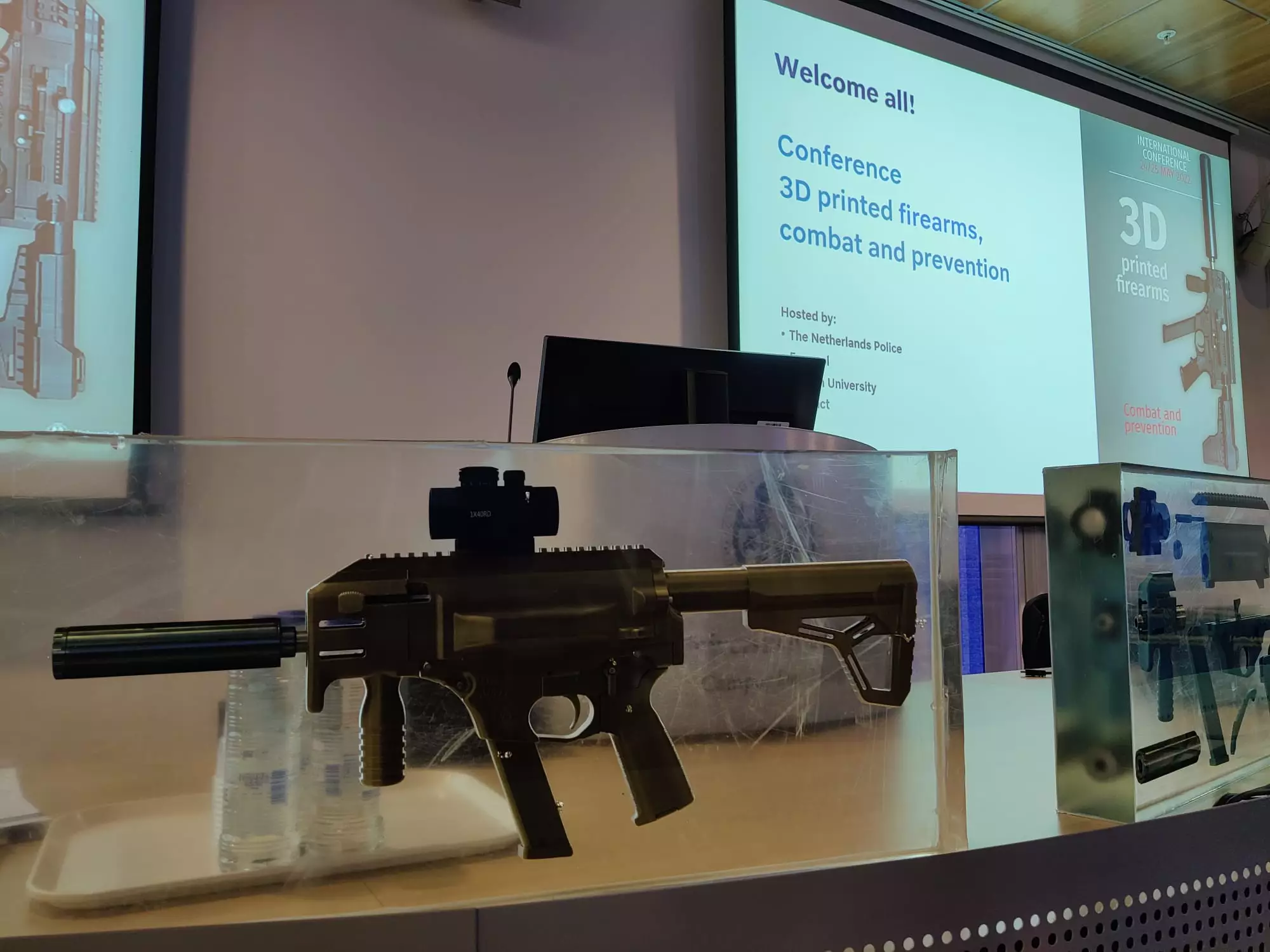When Springfield, Massachusetts’s often-criticized narcotics bureau, became a firearms investigation unit (FIU) back in July 2021, police commissioner Cheryl Clapprood said gun violence had become the biggest public safety concern in the city. In less than two years, Springfield Police Department (SPD) ‘s specialized unit has been spearheading investigations, arrests, and seizing hundreds of weapons as it identifies the city’s most significant drivers of gun violence. So far, in 2023, the detectives have seized over 40 illegal firearms, including 13 ghost guns. During one of their latest investigations, officers arrested two men and seized drugs and weapons, including a 3D printed gun.
According to a police report, on March 10, 2023, FIU detectives seized two firearms, a trafficking amount of cocaine, methamphetamine, oxycontin, and heroin, and arrested 20-year-old Julias Cruz and 40-year-old Robin Liberte at an apartment complex on Wilbraham Road.
For the past several weeks, the detectives had been conducting an illegal firearms investigation which placed Julias Cruz as the prime suspect, authorities said. As for Liberte, he was out on parole for prior drug offenses.
Once inside the apartment, the detectives uncovered a 3D printed ghost gun loaded with six rounds of ammunition, a second firearm loaded with nine rounds of ammunition, a shotgun magazine with five shotgun rounds, and a flash suppressor for a shotgun. They also recovered drugs, including 33 grams of crack cocaine, 15 grams of cocaine, 12 grams of meth, 1600 pills of oxycontin, and ten bags of heroin.
Liberte was charged with five counts of drug trafficking and possession, and Cruz was charged with 19 counts, including possession of unlicensed firearms and ammunition and drug trafficking and possession. However, an SPD arrest report revealed that the two suspects had already been released.
 A 3D printed gun showcased at The International Conference on 3D Printed Firearms. Image courtesy of Europol.
A 3D printed gun showcased at The International Conference on 3D Printed Firearms. Image courtesy of Europol.Springfield Police’s need to create a firearms unit was sparked by an analysis of crime statistics that show an increase in aggravated assaults with a gun in the city, which many say is part of a national trend.
Since its inception, FIU detectives have focused on working with informants, people recently released from jail, and using gang intelligence in investigations. In trying to trace the illegal guns back to their origins, the group also works closely with the Federal Bureau of Alcohol, Tobacco, Firearms and Explosives (ATF). The agency has been behind recently created regulations like qualifying ghost gun kits as “firearms,” running background checks before selling parts kits that could be used to assemble firearms, or requiring that gun retailers and gunsmiths add a serial number to 3D printed guns or any nonserialized firearms they accept for resale or purchase. These new rules are part of a Biden Administration move to crack down on ghost guns due to a growing threat of mass shootings and the potential for crimes committed with 3D printed firearms.
Although 3D printed weapons haven’t played a massive role in actual criminal violence, law enforcement agencies increasingly seize 3D printed firearms every month during investigations. In 2022, 3DPrint.com’s research into arrests related to additively manufactured guns shed some light on the matter. Our data shows that the number of arrests is higher in countries like Canada, the U.S., and Australia, representing 18%, 44%, and 17% out of total arrests.
These numbers, published in June 2022, have already escalated, as police officers have found 3D printed weapons every month in several cities across North America, Europe, and Oceania. This has led to companies like Sculpteo banning firearm printing, saying it doesn’t want to be associated with weapon manufacturing. Others, like service bureau Materialise, have launched a feature to block the production of guns on their machines. But no matter how much these companies and government agencies try, experts say that stopping 3D printed weapons could be as tricky as decreasing cybercrime.
Although some evidence suggests that more restrictions can reduce gun violence altogether, the increase in recent shootings highlights the limitations. Although 3D printed weapons raise legal and security issues, many believe it is still improbable that the most significant risk of an attack will come from a 3D printed gun. At the same time, others are preparing to tackle a future with more 3D printed firearms, with groups like Liberty Defense anticipating a potential danger with non-metal weapons detection systems in airports and other commercial checkpoint applications.
Subscribe to Our Email Newsletter
Stay up-to-date on all the latest news from the 3D printing industry and receive information and offers from third party vendors.
Print Services
Upload your 3D Models and get them printed quickly and efficiently.
You May Also Like
Making 3D Printing Personal: How Faraz Faruqi Is Rethinking Digital Design at MIT CSAIL
What if your 3D printer could think more like an intelligent assistant, able to reason through a design idea, ask questions, and deliver something that works exactly the way the...
Reinventing Reindustrialization: Why NAVWAR Project Manager Spencer Koroly Invented a Made-in-America 3D Printer
It has become virtually impossible to regularly follow additive manufacturing (AM) industry news and not stumble across the term “defense industrial base” (DIB), a concept encompassing all the many diverse...
Heating Up: 3D Systems’ Scott Green Discusses 3D Printing’s Potential in the Data Center Industry
The relentless rise of NVIDIA, the steadily increasing pledges of major private and public investments in national infrastructure projects around the world, and the general cultural obsession with AI have...
Formlabs Teams Up with DMG MORI in Japan
In late June, Nick Graham, Chief Revenue Officer at Formlabs, announced on LinkedIn that the company had partnered with DMG MORI, one of the world’s leading machine tool companies, to...

































